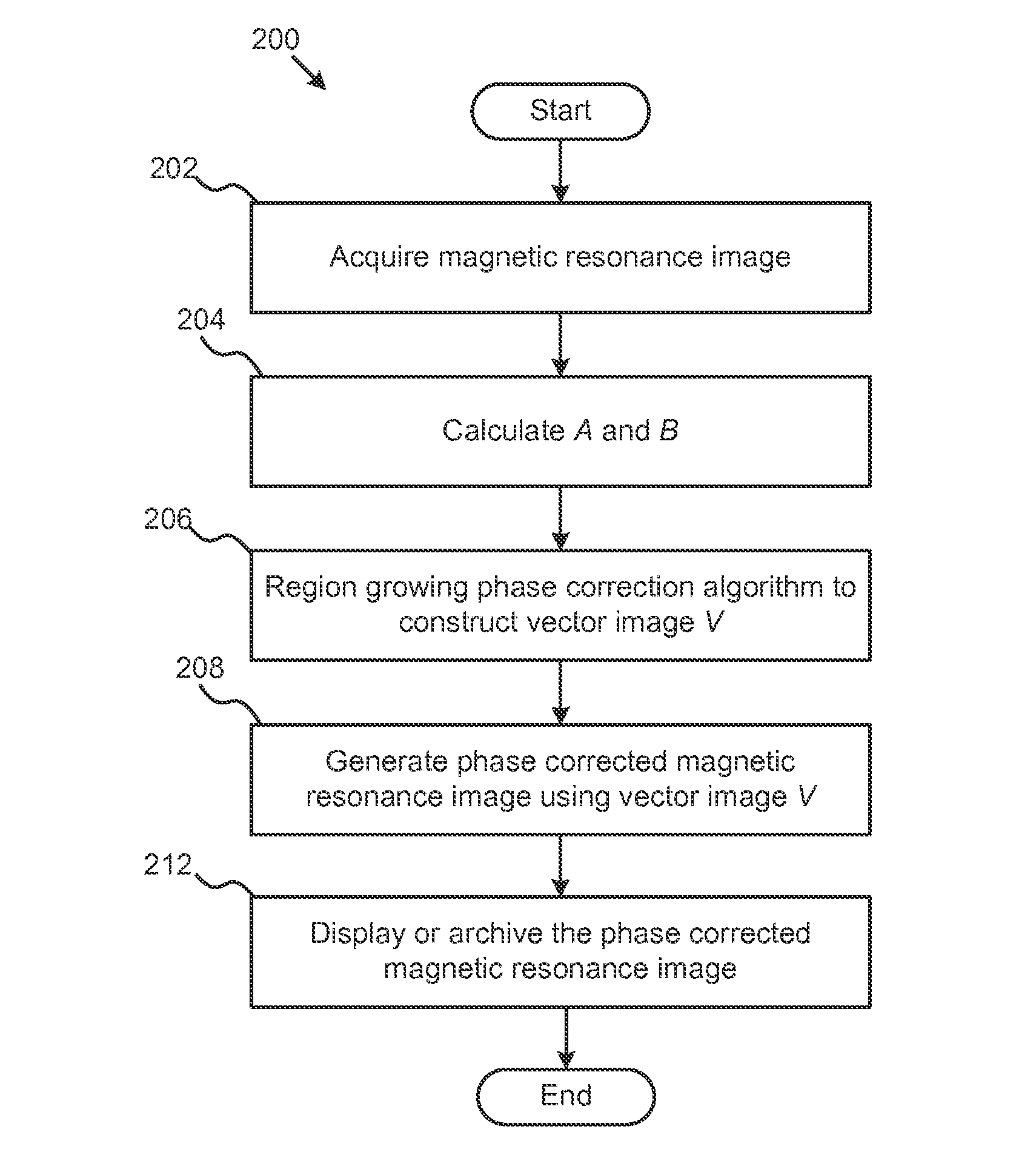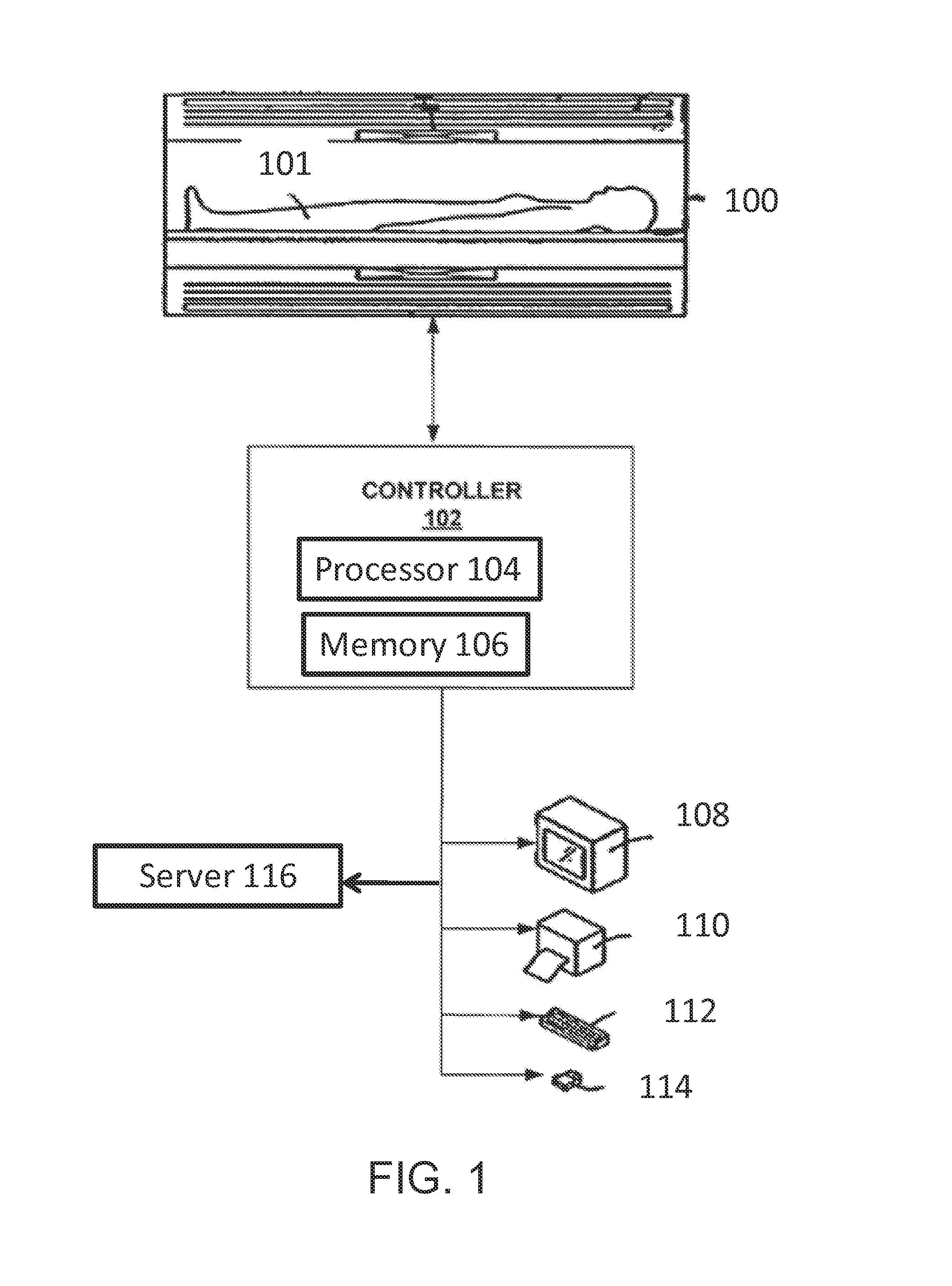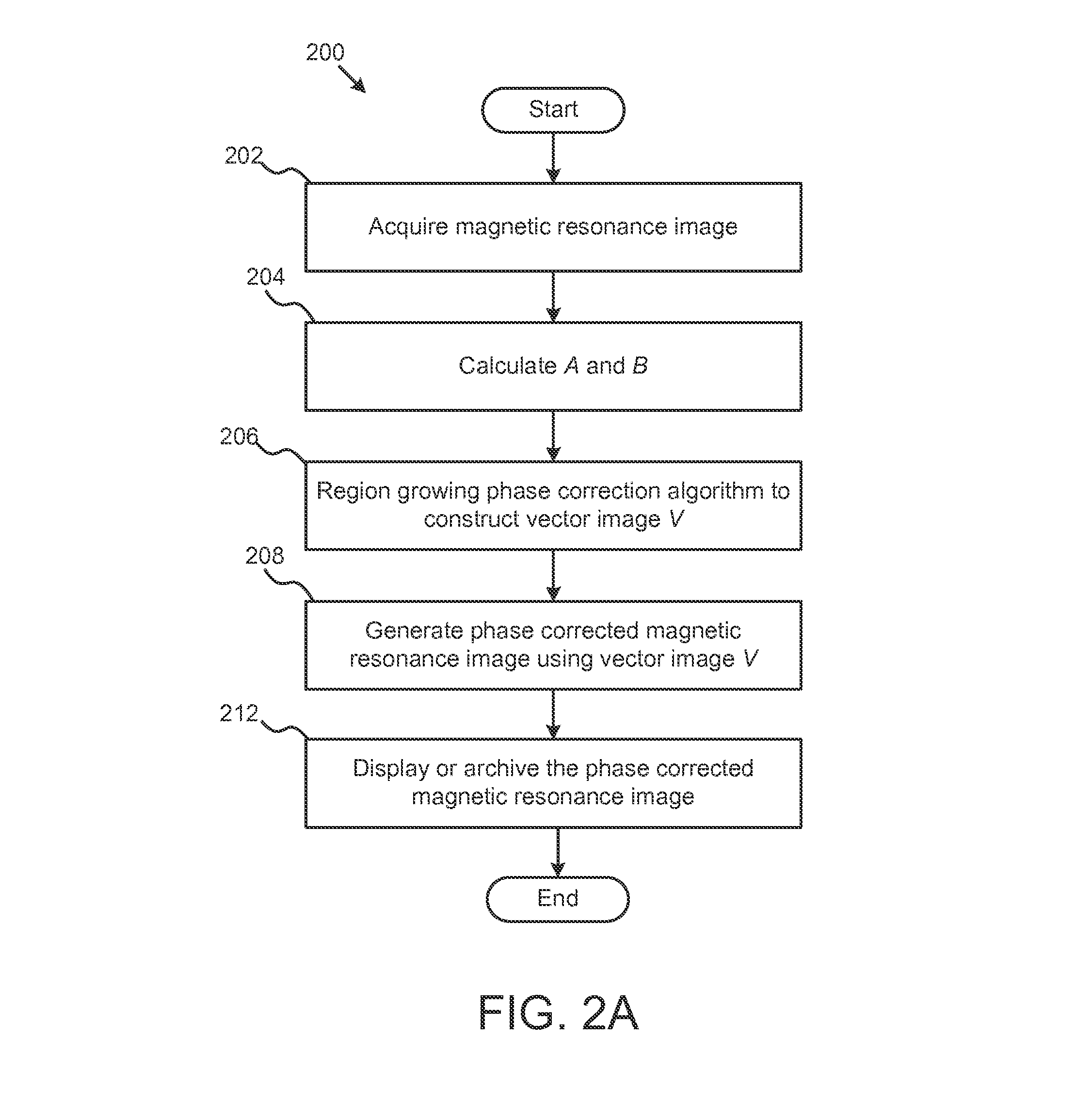Method and apparatus for extended phase correction in phase sensitive magnetic resonance imaging
a phase correction and phase sensitive technology, applied in the field of medical imaging, can solve the problems of reduced or even reversed contrast in an ir image, almost unavoidable in an mr image, and the potential for increasing tissue contrast by ir imaging, etc., and achieves the effect of greater overall orientational smoothness
- Summary
- Abstract
- Description
- Claims
- Application Information
AI Technical Summary
Benefits of technology
Problems solved by technology
Method used
Image
Examples
example 1
Two-Point Dixon Example
[0100]The flexible phase postprocessing strategy, as described in detail above, was implemented using MATLAB (MathWorks), and a 3D fast spoiled gradient-echo bipolar dual echo pulse sequence was used to collect raw data for a water / fat phantom (consisting of water and vegetable oil) and for the in vivo abdomen of a human subject using a 1.5T whole-body MR scanner (GE Healthcare; HDxt platform). For the in vivo imaging, an eight-channel phased array body coil was used, and the scan parameters were as follows: TR=minimum, FOV=36×27 cm, acquisition matrix=256×192, flip angle=12°, slice thickness=4 mm, total number of slices=38, and receiver bandwidth=±83.33 kHz. Minimum as well as different combinations of manually selected echo times were used for the dual-echo readout. For the phantom imaging, an eight-channel phased array head coil and scan parameters similar to those for the in vivo scanning were used except that for a fixed TE1 of 1.2 ms, TE2 varied systemat...
PUM
 Login to View More
Login to View More Abstract
Description
Claims
Application Information
 Login to View More
Login to View More - R&D
- Intellectual Property
- Life Sciences
- Materials
- Tech Scout
- Unparalleled Data Quality
- Higher Quality Content
- 60% Fewer Hallucinations
Browse by: Latest US Patents, China's latest patents, Technical Efficacy Thesaurus, Application Domain, Technology Topic, Popular Technical Reports.
© 2025 PatSnap. All rights reserved.Legal|Privacy policy|Modern Slavery Act Transparency Statement|Sitemap|About US| Contact US: help@patsnap.com



